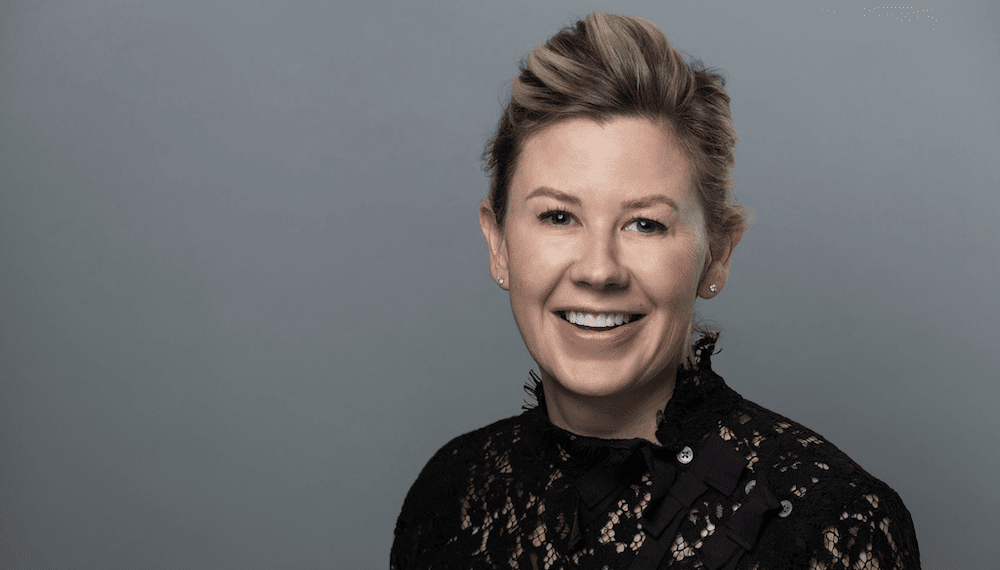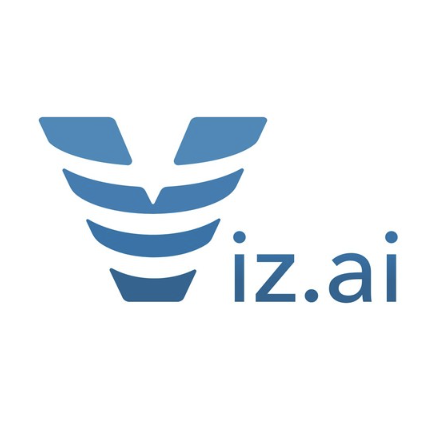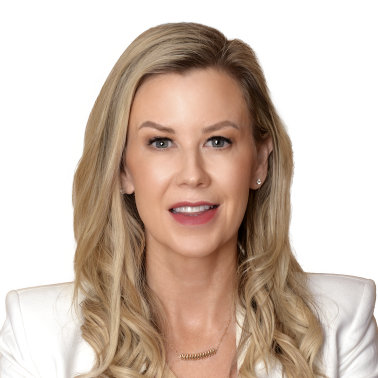Calculate your cash burn rate
Use our cash burn rate calculator to measure your startup’s recent cash burn rate and estimated cash runway.
To use the calculator, you’ll need your company’s cash position for the past 3 months and the amount of capital you’ve raised over the past several months. Or, scroll down to learn about the two most common burn rate formulas.
What is burn rate?
Burn rate measures how much cash a startup loses over a given time period, and is typically measured as the dollars decreased over a month. Because venture capital backed companies usually operate at a loss and rely on VC funding to support their operations, burn rate is a metric closely tracked by experienced founders and investors. This number, calculated on a monthly basis, is the primary input that goes into the formula to calculate a startup’s zero cash / cash out date / runway.
In general, this metric is a negative number (as in most startup’s have their bank account go down every month), but it’s often expressed without a negative sign (“-”) or parentheses. If your startup is actually generating positive cash flow every month from operations, make sure you adequately disclose this to investors and other players in the startup ecosystem! Since most VC backed startups lose money, you will be in a unique minority position that many investors won’t instinctively expect.
How to calculate burn rate
A startup’s burn rate is effectively the amount of money it is spending in excess of its revenue every month. There are a couple of different ways to calculate burn rate. The easiest method is to take the average decrease in the company’s cash position over the past several months - exclusive of any financing events. For example, if a company had $300,000 in the bank, then $275,000 the next month, then $250,00 the last month, then the metric would be $25,000 a month.
Don’t forget to include other, non-checking account balances. Your payment processor, a money market account, a saving account, etc. all likely contain dollars that should be included in the analysis.
Burn rate and cash from financing
One question we get from founders is if the funds they raise from venture capitalists should be included in the burn rate calculation - in particular, if the cash flow from the dollars raised decreases the company’s burn. Cash from Financing isn’t typically included in the burn rate calculation since this represents incoming funds from investors, loans or lines of credit, and not the money being spent by the business in its regular operations and investments. The business’s ability to attract financing is a separate matter from its operational efficiency and control over expenses, which is what the cash burn rate seeks to measure. If the startup is going to raise the same amount of financing every month for the foreseeable future, then you could make the case for changing the burn rate that goes into the average cash burn, but that’s not typical for most startups.
Two ways to calculate cash burn rate - the two formulas
Let’s dive into the two ways experienced CFOs use to understand burn rate.
The income statement method
One method of calculating burn rate uses a startup’s income statement. Income statements show a company’s income and expenditures, and follows a formula: Net Income = (Revenue + Gains) – (Expenses + Losses). Normally your startup accountant sends you an income statement every month, so one way to determine the metric every month is to just look at the net income on your income statement - and that’s conceptually how much your bank account balance should be decreasing every month.
However, your income statement will also include things that are accrued, as well as items that are capitalized. Accrual accounting recognizes revenue when it’s earned and records expenses when they are incurred, rather than when money changes hands. So a SaaS company that signs a 1-year, $60,000 contract to provide services for a year would recognize $5,000 each month, even if the customer paid the full $60,000 at the beginning of the year. A startup that invests heavily in equipment will capitalize those expenses, and expense the cost over the useful life of the equipment, even though the startup paid for the equipment in full. So the income statement doesn’t necessarily show how much actual cash the startup has at a particular moment.
Income Statement Burn Rate Formula
Net Income Burn Rate = (Revenue + Gains) – (Expenses + Losses)
Thus, you’d calculate your runway from this method by dividing your cash balance by the results from the above formula.
The cash flow method
Calculating a cash burn rate using a startup’s cash flow statement gives a different picture, and at Kruze Consulting we calculate our clients’ metrics both ways. The cash flow statement shows the actual amount of money that is entering and leaving your startup in a given period, and shows you how much cash your startup has on hand at a given time. Typically startups have a negative cash flow because they don’t make money in their early years. The negative total from the cash flow statement is how much money the startup is spending each month.
One easy way to calculate cash burn using the cash flow method is to take the ending bank balance from the prior month and to subtract it from the ending position of the current. This formula will yield the cash burn for the month.
However, if you have just raised capital then you should remove that capital addition from your calculation. One way honest way to use the cash flow method is to look at your company’s cash flow statement at the Operating Cash Flow, or Cash Flow from Operations section. This will be the 1st section of your statement. Unless your startup is investing in a lot of equipment, property or other hard assets this will be a good proxy for your cash burn.
Cash Flow Statement Burn Rate Formula
Monthly Burn Rate = Ending Bank Balance (Prior Month) - Ending Bank Balance (Current Month)
Average the numbers to get burn rates
With both the income statement and cash flow methods, you’ll need to average the numbers over a specific period to get a burn rate. For many companies, we calculate the metric on a six month average. That “smooths out” a lot of the spending and gives a good picture of the company’s actual burn rate. Some companies prefer a three-month average, which will show more of the spending ups and downs, and makes sense if you are rapidly growing revenue, adding headcount, etc. But whichever method you choose, you should look at it every month. It’s a good idea to provide that information to your board of directors, as well.
What is gross burn rate?
Gross burn rate is the most conservative way for a startup to calculate your monthly net cash out the door. Your gross burn rate is essentially all the money the company spends each month, including operating expenses, taxes, registrations, etc. Some people like to add in any capital expenditures, which is perfectly valid. But the gross number does not include any revenue, which is why it provides the most conservative cash-out date for startups.It’s the total amount of money going out the startup’s door each month.
The reason for using the gross calculation is that for startups, revenue can be very volatile. For example, you may get a few customers and find out your product needs changes, so it could be months of product updates before you get more customers. Again, it’s a good idea to look at gross two ways: Don’t include revenue at all for the gross metric, and factor in some conservative revenue projections for a second burn rate, called net burn rate. That gives you the worst-case scenario along with a less conservative projection that considers your startup’s income. Both those can be used to generate zero cash dates that will help you fine-tune your operating plan and decide when to start fundraising again.
In mid-2022, we are seeing some serious increases to customer churn for some of our consumer businesses - this means that the revenue that they’ve been counting on isn’t so ‘in the bank’ if you will. This is where the gross numbers are very helpful – they provide a true, worst-case scenario that can be used to decide if/how/when cuts will need to be made.
When should founders - and VCs - be concerned that cash burn is too high?
So how can a founder tell when their company has too high of a cash burn rate? The first place to look is to review the company’s financial model projections and tracking the company’s actual expenses. Regular monitoring of KPIs, and achieving the most important business milestones, are essential to ensure the company is on the right track.
If the company is not achieving its milestones or meeting its KPIs while the burn rate is increasing, it might indicate that the cash burn is too high. Or if the company is only barely hitting key milestones but is spending way more than projected!
Additionally, the difference between the company’s operating loss on the income statement and actual cash burn could indication of underlying issues. Large disparities could be an indication that the cash burn is higher than anticipated, especially when customer payments are slower than expected or there are outstanding expenses unpaid by the startup.
If the company is aggressively spending the majority of its funds without seeing adequate progression towards its objectives, those could be signs of a high and concerning cash burn. Furthermore, if the startup’s runway is decreasing rapidly without a proportional achievement of milestones, this is another sign the burn rate is too high and a potential concern.
Pros and cons of burn rate as a metric
Pros - advantages of the burn rate formula
- Cashflow focus: Tracking burn rate keeps startups focused on managing their cash flow effectively, which is critical for survival and long-term success.
- Runway visibility: By calculating burn rate, startups can easily determine their runway, allowing them to plan fundraising efforts and make informed spending decisions.
- Investor communication: Investors often ask about a startup’s burn rate, so having a clear understanding of this metric can help founders communicate effectively with potential investors.
- Benchmarking: Comparing burn rates with similar startups can give founders a sense of whether they are spending too much or too little relative to their peers.
- Input into other formulas: This metric is used in calculating other formulas, such as the burn multiple, so understanding it helps founders compare their performance to similar companies.
Cons - disadvantages of the burn rate metric
- Overemphasis on cost-cutting: Focusing too heavily on burn rate may lead startups to prioritize cost-cutting measures over growth and investment, potentially hindering long-term success.
- Short-term focus: Burn rate is inherently a short-term metric, and relying on it too heavily may cause startups to neglect long-term strategic planning and value creation.
- Neglecting unit economics: Burn rate doesn’t provide insight into the unit economics of a startup’s business model, such as customer acquisition costs and lifetime value, which are critical for long-term profitability.
- VCs can over index on it: Some VCs can overindex on this metric, and this can cause short-term thinking to reduce a startup’s long term value.
- Lack of context: Burn rate alone doesn’t provide context about a startup’s growth, market traction, or competitive position, all of which are important factors in evaluating a company’s potential.
Tips for managing cash burn
The biggest tip we can offer to founders looking to control and manage their cash burn is to maintain a detailed financial model that forecasts monthly expenditures, including staffing costs. Your financial model shouldn’t merely be an accounting task but should incorporate key performance indicators (KPIs) that serve as a health check for your business.
A proven method many successful startups employ to regulate their cash burn rate is to link any escalation in expenses to the achievement of specific milestones or KPIs. Each new team member or subscription service you add has a compounding effect on your monthly cash outflow, thereby increasing your burn rate. By correlating significant spending hikes to clear-cut KPI goals, entrepreneurs can exercise better financial stewardship over their company’s resources.
For instance, you might decide not to bring on a third sales representative until one of your initial reps demonstrates they can meet sales quotas without requiring the founder’s direct involvement.
Benchmarks to Use to Gate Burn Rate
Other benchmarks you can associate with upticks in expenses may include:
- Evidence of product-market fit
- A defined number of customers
- Regulatory clearances
- Demonstrable sales and marketing alignment
- Momentum in releasing new features
- Retention of major clients
This approach is particularly effective during challenging financial climates, like recessions, where capital is harder to secure.
Tips for projections
Of course, you want to look forward as accurately as possible. Best practice for companies that are growing, investing more and more aggressively on R&D or marketing, etc., is to create a financial model that projects your monthly ending bank account balances. Startups need to have an incredibly detailed view into the cashout date, and a solid set of projections is the best way to do it. And it’s great financial hygiene to compare the ‘budget to actuals’ - i.e. the actual results against your startup’s financial plan. Here are some tips on how to build a startup budget.
Take a clear look at your startup’s burn rate
So again, gross burn rate is the worst case scenario for your cash out date, and net factors in estimates for any income. Both are good to know – you don’t want to kid yourself and you really want to have that honest look at your cash position and how much runway you have. If you have other questions on calculating or managing burn, cash out dates, or runway, contact us.
How does your burn rate relate to your runway?
Your startup’s runway is defined as the number of months you can continue to operate, based on two factors. The first is the total amount of cash your startup has in the bank. The second is your cash burn rate, which is the amount of cash you’re spending every month. Since that amount probably fluctuates each month, you should take the average burn rate over at least three to six months. If you’re growing rapidly, a three-month average may be the best option for you. A six-month average can be useful if you’ve paid a lot of one-time expenses that won’t reoccur. Once you know how long your runway is, you’ll know when you need to start raising more cash. You should probably start fundraising when you have about 10 months of runway left, and some more conservative founders start even earlier. If you’re down to six months, you really need to start raising money. So burn rate and runway are two very important concepts that startup founders need to understand.
Gross vs net burn rates
Startup investors often throw out several definitions of burn rates - in particular, Gross and Net. Let’s take a closer look at these terms to fully understand their implications.
Gross Burn: Your business’s monthly expenses
In simple terms, the gross burn rate is the total amount of money your startup spends each month. The gross burn rate includes costs such as salaries, office rents, utilities, and other operational costs. For most businesses, cost of goods sold is negligible and is ignored.
One huge item to note with the gross calculation is that it doesn’t include any cash inflows - only expenses.
This is actually a feature of the calculation - it gives founders a view into the company’s total expenses, and when used in a runway calculation tells a founder how long the company has to live if revenue dries up (or never materializes). Having an exact sense of monthly spend is very valuable.
Your gross burn rate is calculated by adding up your total monthly operating expenses. It’s crucial to maintain a clear record of all your expenses and update this regularly to have a precise gross burn rate.
Net Burn: A good calculation of financial health for stable companies
Net burn, on the other hand, offers a more complex but comprehensive view of your company’s financial health. It’s the total amount of cash your business is losing per month. Unlike the gross burn, the net burn rate considers both your total monthly expenses and your total revenue.
In essence, the net burn rate is an accurate reflection of your cash flow. It includes your revenue and cost of goods sold (COGS) in addition to operational expenses. Net burn offers a comprehensive perspective of your current financial situation. It makes the most sense to use for a company that is reliably producing revenue.
However, in a situation where you may lose clients, it can be a misleading view into how much your company is spending per month, and thus can give you an overly optimistic view into your runway. For companies that are seeing a lot of churn, who are navigating a downturn or who are facing uncertain times, founders should have a strong handle on the gross burn number.
To calculate your net burn rate, take your total monthly revenues, subtract the total monthly cost of goods sold (COGS) and total monthly operational expenses. This is basically an EBITDA calculation, which is something non-tech companies use regularly as an important metric for cash production.
Accrual accounting, which is generally preferred by investors and board members, forms the basis of net burn calculation. It offers a consistent calculation that’s contextually aligned with your financial records, making it a preferred choice for financial stakeholders.
Wrapping Up: Gross Vs. Net Burn Rate
While both gross and net burn rates are critical financial metrics, they offer different perspectives of your company’s financial state. Gross burn provides an understanding of your total monthly expenditure, whereas net burn paints a more nuanced picture of your financial health by considering both revenue and expenses.
Should Your Burn Rate Include Cash from Financing?
Founders often ask if they should include cash from financing in their burn rate calculations. Obviously, when calculating your burn rate, you want to be as accurate as possible. So let’s have a look at why cash from financing should not be included.
Why Shouldn’t You Include Cash from Financing in Your Burn Rate?
When calculating a burn rate, should you include cash that you’ve raised from investors, loans, or other lines of credit?
The simple answer is no, and here’s why. The purpose of calculating your burn rate is to understand and monitor the money that’s being used to fund and grow your business and run your operations. It’s a way to track how you’re spending on things like salaries and rent. It’s also crucial for understanding how your revenue offsets those expenses.
Cash from financing, on the other hand, represents funds that are coming in. It’s money that you have raised to support these operations from third parties like investors. It’s not money that you’re actively creating or spending as part of your day to day business.
So if you include financing in your burn rate, it can artificially decrease your burn rate, and make it seem like you’re spending less money than you actually are. This can give you some pretty inaccurate views into your startup’s financial health and, potentially, could lead to you making poor decisions.
If you thought your company was generating enough revenue to cover your expenses because of the financing coming in, you’d be making a mistake in terms of how you run your business. Imagine a scenario in which a lot of cash comes in from investors from raising a series A round. If you included that in your burn rate calculation, it would look like your burn rate has suddenly decreased.
This misleading information makes it appear as though your burn rate has flipped and become positive. However, the truth is that your spending really didn’t change because of that event. This could lead you to believe that you are getting close to being profitable, which could lead to big problems.
You Should Include Cash from Financing When Calculating Runway
When doing your runway calculations, however, you do include cash from financing. This is because your cash balance goes up when financing comes in, and that extends your runway. But you still want to keep your average burn rate, or the burn rate you use to understand when you run out of business, focused on your operating expenses.
One Possible Exception
There is an exception to this rule. If you very reliably receive approximately the same amount of financing every month, you may be able to make the case that it’s more like an operating item. In that case, you might include it in your burn rate calculation, but this situation is pretty rare. In fact, it’s very rare. So our advice would be to be very cautious about this.
Make Sure Your Startup’s Burn Rate Is Accurate
So when you’re calculating a burn rate, it’s best to exclude cash from financing. Focus on the amount you’re spending every month to operate your business, and, if you’re generating revenue from operations, then include that revenue. That will give you the most accurate view into your startup’s financial health and help you make informed decisions.
If you’d like to learn more about startup finance and accounting, follow the Kruze Consulting YouTube channel, check us out on LinkedIn, and visit our website. We’ve answered hundreds of Q&As and you can use our AI widget to answer your accounting questions.
Other burn and cash management tips by Kruze experts
This article written and reviewed by
Kruze Cares More!
Ready to Work With The Best Accountant?
HOW ARE WE DIFFERENT?
We know you are busy. So, we have developed highly automated systems that we use to quickly get the job done for you. However, we don’t just stop there. We go above and beyond automation and always have a team of certified public accountants (CPA) experts ready to provide you with white-glove service. This is the Kruze way!
Don’t take our word for it. Check out our client reviews and testimonials.













